¿Qué es y cómo escribir una cover letter exitosa? + Ejemplos

Talin Terzakyan
18 julio, 2023
Última actualización
06 agosto, 2024


Tabla de contenidos
¿qué es una cover letter y para qué se usa, estructura de una cover letter exitosa, consejos y ejemplos para escribir una cover letter exitosa, ejemplos de cover letter, destácate frente a otros postulantes con una cover letter exitosa, puntos clave en este artículo.
- Una cover letter es un documento valioso para captar la atención de los reclutadores, ya que permite destacar las habilidades y los conocimientos más relevantes del candidato.
- La cover letter complementa la información de tu CV y brinda una visión más detallada al reclutador acerca de tu postulación.
- La estructura de una cover letter exitosa incluye un encabezado con los datos de contacto, un saludo personalizado, un párrafo de introducción, un cuerpo del mensaje destacando logros y habilidades relevantes, un cierre resaltando el interés en el puesto de trabajo y una despedida cordial.
Una cover letter puede hacer la diferencia en la selección de tu candidatura frente a otros postulantes , por eso es tan importante. Esta herramienta es valiosa si está bien redactada, como una oportunidad para captar la atención de los reclutadores, ya que puedes destacar cuáles son tus habilidades, conocimientos y experiencias. También, puedes mostrar un interés genuino por el puesto al que aspiras.
¿Quieres saber qué es una cover letter, cómo se usa y qué estructura seguir? Aquí te lo compartimos.
Una cover letter , también conocida como carta de presentación, es un documento de una sola página importante en la búsqueda de empleo que se envía junto al currículum vitae. ¿Cuál es su propósito? Complementa y resalta información proporcionada en el CV, para que el reclutador tenga una visión más detallada sobre quién eres y por qué eres el candidato perfecto para cubrir la vacante disponible.
Asimismo, una cover letter cumple varias funciones. Entre las principales, se destaca por su nivel de personalización , ya que se dirige específicamente al empleador, lo cual contribuye a captar su atención desde el minuto uno. En adición, puedes destacar cuáles han sido tus logros hasta el momento en el plano profesional, qué resultados has alcanzado y qué objetivos has superado con creces, en relación al puesto que deseas postularte.
Sin dudas, una cover letter bien realizada puede sumarte unos cuantos puntos para obtener la entrevista que deseas, a pesar de que existe un mercado laboral tan competitivo.
¿La cover letter es diferente al CV?
Sí, se trata de dos documentos distintos en cualquier proceso de búsqueda de empleo. Si bien ambos son importantes, cada uno tiene una finalidad y estructura particular. Mientras que el CV corresponde a un resumen de tu experiencia laboral (años de experiencia, en qué lugares y demás), educación, conocimientos y logros, la cover letter acompaña al CV para destacar aspectos relacionados íntimamente con el puesto y la empresa a la que quieres postularte.
Por lo tanto, la carta de presentación es un recurso que puedes aprovechar para mostrar interés en la posición y hacer aclaraciones sobre tus conocimientos y experiencia ligados a la oferta a la que aplicas, para demostrar esa conexión.
Si tienes dudas sobre qué estructura de cover letter seguir, puedes tomar como referencia la que te compartimos a continuación:
A. Encabezado
El encabezado de la cover letter debe incluir tus datos personales (datos de contacto) y los del destinatario de manera clara y concisa.
- Asegúrate de proporcionar tu nombre completo, dirección de correo electrónico, número de teléfono y, si corresponde, tu dirección postal.
- Incluye los datos del destinatario, como el nombre completo y el cargo del reclutador o la información de contacto de la empresa.
Dirígete al responsable del proceso de selección de Recursos Humanos de manera personalizada y adecuada. Utiliza su nombre completo si está disponible, esto demuestra interés y atención. Si no conoces el nombre de la persona que se encarga del proceso, puedes usar un saludo genérico como "Estimado/a Equipo de Contratación" o "A quien corresponda".
C. Párrafo de introducción
En el primer párrafo de tu cover letter , preséntate brevemente y menciona el motivo de tu solicitud.
- Expresa tu entusiasmo por el puesto y la empresa.
- Menciona cómo te enteraste de la oportunidad, por ejemplo, LinkedIn (incluye este dato solo si es relevante, es decir, si aporta un dato valioso; de lo contrario, omítelo).
- Comienza por destacar algún aspecto positivo de la empresa que te haya llamado la atención.
- Menciona a qué puesto te postulas y menciona el nombre de la empresa.
D. Cuerpo del mensaje
En el cuerpo de la cover letter, es importante resaltar tus logros, habilidades y experiencia relevante para el puesto.
- Utiliza ejemplos concretos para respaldar tus afirmaciones y enfócate en aquellos aspectos que demuestren tu capacidad para cumplir con los requisitos del puesto. Así, el reclutador te verá como un buen candidato por la carrera profesional que tienes.
- Destaca cómo tus habilidades y logros anteriores te preparan para contribuir al éxito de la empresa (por ejemplo, en relación a la productividad ).
- Expón cómo se vinculan tus conocimientos y experiencia con los requerimientos del puesto (por ejemplo, si tienes experiencia trabajando de forma asincrónica ).
En el cierre de la cover letter , enfatiza tu interés en el puesto y agradece la oportunidad de presentar tu candidatura.
- Puedes destacar los motivos de por qué te gustaría formar parte de la organización a la que aplicas.
- Explica brevemente cómo consideras que puedes contribuir al crecimiento de esa organización.
F. Despedida
Finaliza la carta con un saludo cordial , como "Atentamente" o "Saludos cordiales", seguido de tu nombre completo. Asegúrate de firmar con tu nombre completo.
La cover letter desempeña un papel relevante en cualquier proceso de búsqueda de empleo, para todo tipo de actividad e industria, pero especialmente en el contexto del trabajo remoto. Esta carta personalizada brinda la oportunidad de destacar tus habilidades y experiencias más importantes, como oportunidad para captar la atención del empleador y demostrar tu entusiasmo por el puesto.
A continuación, te compartimos una serie de consejos prácticos y dos ejemplos de cover letters exitosas para inspirarte en tu redacción y conseguir el trabajo de tus sueños:
1. Personaliza el saludo y muestra interés en la oferta de empleo
Primero, debes investigar la empresa en cuestión : ¿cuál es su historia? ¿Qué es lo que hace? ¿Cuál es su actividad? ¿Cuál es su trayectoria? ¿Cuál es su misión y sus objetivos? Generalmente, toda esta información suele estar disponible en el sitio web oficial de las empresas, en la sección “Quiénes somos” o “Sobre nosotros”. Investiga sobre la organización y menciona algún aspecto específico que te atraiga o inspire interés.
Ejemplo incorrecto:
“Me postulo para el puesto de Marketing que vi publicado recientemente. Me interesa seguir ganando experiencia en agencias de publicidad”.
Ejemplo correcto:
“Estimada Sra. Alejandra Migliore, me postulo para el puesto de Responsable de Marketing en Growth Motion Greit S.A. Desde que descubrí su enfoque innovador en Marketing y Publicidad, he estado impresionada por su compromiso con el cliente, ya que lo ubican en el centro de la escena. Esto es algo no muy común en las agencias de publicidad y me motiva muchísimo porque facilita la comunicación y el logro de los objetivos de los clientes".
2. Resalta logros y habilidades relevantes
La recomendación aquí es que emplees ejemplos concretos y resultados cuantificables para respaldar los logros que has cosechado y tus habilidades más destacadas (en relación a los requisitos del puesto publicado, preferentemente).
“Tengo experiencia en la creación de estrategias para generar leads”.
“Durante mi experiencia como Líder de Redes Sociales en Abarca Lers, no solo coordiné el equipo de Social Media, sino que también asumí la responsabilidad de llevar a cabo la estrategia, diseño e implementación de las campañas publicitarias con objetivo de generación de clientes potenciales. El ROI que alcancé fue positivo, lo que permitió el aumento de conversiones en el sitio de una tasa de más de 30% a un Costo por Resultado económico”.
3. Muestra entusiasmo y cómo se alinean tus valores con los de la empresa
Es importante que aquí destaques por qué te interesa el puesto y cuáles son tus valores (los cuales deben estar en sintonía con los de la empresa a la que te postulas).
“Quiero unirme a su empresa y aportar al crecimiento. Comparto su visión”.
“Estoy muy emocionada por la posibilidad de unirme a Growth Motion Greit S.A. y contribuir a su crecimiento. Comparto su pasión por la generación de resultados y la vocación de servicio hacia los clientes. Mi experiencia en pauta publicitaria me ha preparado para enfrentar nuevos desafíos y oportunidades como las que ofrecen ustedes. Estoy entusiasmada por aportar mi experiencia y formar parte de su equipo”.
4. Utiliza un lenguaje claro y conciso durante toda la carta
La técnica excesiva puede ser perjudicial, sobre todo porque quien lo lee es un reclutador generalista en la mayoría de los casos. Por eso, es importante utilizar palabras comunes o que al menos sean frecuentes y popularmente conocidas para el departamento al que te postulas y que, por lo tanto, incluso el reclutador esté familiarizado con esos términos (pero no abuses de ellos durante la redacción, usa las palabras clave que aparecen en la oferta de trabajo publicada).
“Como Project Manager, mi enfoque se basa en lo simple y eficiente, con elementos que permiten el éxito. Reconozco la importancia de una gestión efectiva de cada stakeholder y los equipos multidisciplinarios. Durante mi trayectoria como Project Manager en Cosecha Aire 34, implementé estrategias de comunicación estratégicas que fomentaron una colaboración más estrecha y optimizaron los tiempos de entrega de proyectos complejos, gracias a metodologías como Scrum y Kanban, además de apps y herramientas como JIRA y Trello, para monitorear progresos y mitigar riesgos”.
“Mi enfoque se basa en la simplicidad y la eficiencia. Considero que una comunicación clara y concisa es fundamental para el éxito de cualquier proyecto. Durante mi experiencia como Project Manager en Cosecha Aire 34, implementé estrategias de comunicación efectivas que mejoraron la colaboración entre los equipos y optimizaron los tiempos de entrega de los proyectos. Herramientas como JIRA y Trello me han sido de gran utilidad para llegar a esos resultados".
5. Cuida la redacción
Los errores ortográficos o las faltas de ortografía no contribuyen a una buena primera impresión. De hecho, una buena carta de presentación no debe tener este tipo de errores. El candidato ideal sabe cómo expresarse y lo hace de forma correcta.
“Como Project Manager, mi enfoque se basa en lo simple y eficiente, con elementos que permiten el éxito. Reconozco la importancia de una gestión efectiva de cada y los equipos multidisciplinarios. Durante mi trayectoria como Project Manager en Cosecha Aire 34, implementé estrategias…”.
Carla García Dirección de correo electrónico: [email protected] Número de teléfono: 123-456-7890 Dirección: Calle Principal 123, Cuzco, Perú
Estimada Sra. Alejandra Migliore,
Me postulo para el puesto de Responsable de Marketing en Growth Motion Greit S.A. Desde que descubrí su enfoque innovador en Marketing y Publicidad, he estado impresionada por su compromiso con el cliente, ya que lo ubican en el centro de la escena, algo que no es muy común en las agencias de publicidad y lo agradezco porque facilita la comunicación y el logro de los objetivos de los clientes.
Durante mi experiencia como Líder de Redes Sociales en Abarca Lers, no solo coordiné el equipo de Social Media sino que también asumí la responsabilidad de llevar a cabo la estrategia, diseño e implementación de las campañas publicitarias con objetivo de generación de clientes potenciales. El ROI que alcancé fue positivo, lo que permitió el aumento de conversiones en el sitio de una tasa de más de 30% a un Costo por Resultado económico.
Estoy muy emocionada por la posibilidad de unirme a Growth Motion Greit S.A. y contribuir a su crecimiento. Comparto su pasión por la generación de resultados y la vocación de servicio hacia los clientes. Mi experiencia en pauta publicitaria me ha preparado para enfrentar nuevos desafíos y oportunidades como las que ofrecen ustedes. Estoy entusiasmada por aportar mi experiencia y formar parte de su equipo.
Atentamente,
Carla García
Lucas Rodríguez Dirección de correo electrónico: [email protected] Número de teléfono: 123-456-7890 Dirección: Calle Principal 123, Ciudad, País
Estimado Equipo de Contratación,
Me postulo para el puesto de Desarrollador de Software en ABC Insurance LATAM. Desde que descubrí la presencia destacada y el enfoque innovador de ABC Insurance en el desarrollo de soluciones tecnológicas para el sector asegurador en toda la región de LATAM, he quedado impresionado por su compromiso con la excelencia y la implementación de las mejores prácticas.
Durante mi experiencia trabajando como Desarrollador de Software en XYZ Solutions, tuve la oportunidad de participar en proyectos clave para compañías aseguradoras líderes en la industria. Formé parte de equipos multifuncionales y trabajé en estrecha colaboración con expertos en el dominio de seguros, diseñadores y otros desarrolladores para crear soluciones personalizadas y de alta calidad.
Mi conocimiento y experiencia abarcan una amplia gama de lenguajes de programación, incluyendo Python, Java, JavaScript y C#, lo que me permite adaptarme rápidamente a las tecnologías y requerimientos específicos de cada proyecto. He desarrollado aplicaciones eficientes y escalables, e implementado sistemas de gestión de bases de datos robustos para garantizar la integridad y seguridad de la información.
Además, mi experiencia en el sector asegurador me ha brindado una comprensión profunda de los desafíos y las necesidades de la industria. He trabajado en proyectos relacionados con la gestión de pólizas, procesamiento de reclamos y análisis de riesgos. Mi enfoque se centra en desarrollar soluciones innovadoras y efectivas que mejoren la eficiencia operativa y la experiencia del cliente.
Estoy emocionado por la posibilidad de unirme a ABC Insurance LATAM y contribuir a su misión de proporcionar soluciones tecnológicas de vanguardia en la industria aseguradora. Estoy comprometido con la mejora continua y ansío enfrentar nuevos desafíos que me permitan crecer profesionalmente y aprovechar al máximo mis habilidades técnicas.
Agradezco sinceramente su consideración y espero tener la oportunidad de discutir cómo mi experiencia y conocimientos pueden beneficiar a ABC Insurance LATAM.
Lucas Rodríguez
Hasta aquí te compartimos la información más relevante sobre qué es una cover letter, cómo se estructura y brindamos distintos ejemplos para que puedan ser de tu utilidad. Ahora bien, ¿tienes poca o nula experiencia trabajando remoto y no sabes por dónde comenzar? Te invitamos a leer nuestra guía completa para conseguir un trabajo remoto sin experiencia .
Sobre el autor
Talin Terzakyan tiene +17 años de experiencia en Marketing, liderando equipos en EE.UU, EMEA y LATAM. Actualmente, es responsable de Growth para Deel en América Latina. Se destaca por su capacidad para pasar rápidamente de la estrategia a la ejecución, priorizando siempre al usuario. Fan del work-life integration, reconcilia su vida laboral con la maternidad y su pasión por el trail running.
Opiniones de Clientes
Centro de Ayuda
Documentación de API
Integraciones
Blog de Deel
Biblioteca de Recursos
Empezar con Deel
Nómina de EE. UU.
Deel Contratista registrado
Gestiona las fuerzas de trabajo globales
Contratar empleados
Contratar trabajadores independientes
Reubica trabajadores
API de Deel
Estado del servicio
Press (Prensa)
La ventaja de Deel
Seguridad de datos
Para industrias
Tecnología educativa
Servicios de TI
Marketing y publicidad
Todas las industrias
Recibe las últimas novedades sobre el mundo laboral de hoy directamente en tu bandeja de entrada.
© Copyright 2024. Todos los Derechos Reservados.
Aviso Legal
Política de Privacidad
Términos de Servicio Política de Denuncias
Política de denuncia de irregularidades
- Career Blog
The Difference Between Cover Letter vs. Resume in 2024

When it comes to job search, writing a cover letter and resume are two crucial steps to landing interviews. A cover letter is a document that accompanies a resume and provides a brief overview of the candidate’s qualifications and interests, while a resume is a formal document which highlights an individual’s work experience, educational background, professional achievements, and relevant skills.
Why are they important?
Cover letters and resumes are important because they play a vital role in the hiring process. They are often the first impression a potential employer has of a job candidate, and serve as a means for employers to assess a candidate’s skills, experience, and compatibility with the role they are applying for. A well-written cover letter and resume can set a candidate apart from the competition and increase their chances of securing an interview.
Overview of differences
While cover letters and resumes serve different purposes, they are both important components of a successful job application. One key difference is that a resume focuses more on a candidate’s skills and work experience, while a cover letter provides an opportunity for the candidate to showcase their personality and explain why they are interested in the position. Additionally, a cover letter allows a candidate to address any gaps in their resume or explain aspects that may not be immediately apparent to a potential employer.
In essence, both cover letters and resumes are tools that job seekers can use to market themselves effectively to potential employers. Understanding the differences between the two and knowing how to craft them effectively can make all the difference in landing that dream job.
Content Differences
When it comes to job hunting, crafting a cover letter and a resume are essential to making a strong first impression. However, it’s important to understand the differences between the two so you can optimize the content and increase your chances of landing an interview.
What does a cover letter contain?
A cover letter is a brief document that typically accompanies a resume. It’s a way to introduce yourself to the employer and highlight your relevant skills and experience. The goal of a cover letter is to persuade the reader to consider your resume and invite you to an interview.

A well-written cover letter should contain the following elements:
- An introduction that includes the job you’re applying for and your reason for writing
- A summary of your skills and experience that are relevant to the job
- A section that highlights your achievements and accomplishments
- A strong closing statement that thanks the employer for considering your application and expresses your interest in the position.
What does a resume contain?
On the other hand, a resume is a more comprehensive document that provides a detailed overview of your professional experience, skills, and achievements. Its purpose is to showcase your qualifications and convince the employer to hire you.
Your resume should include the following information:
- Your contact information
- A professional summary that highlights your skills and experience
- Your work history, starting with the most recent position
- Your education, training, and certifications
- Your skills and personal qualities that are relevant to the job
Importance of tailoring content to the job
One of the most crucial aspects of creating a strong cover letter and resume is tailoring the content to the job you’re applying for. This means customizing your documents to match the skills, requirements, and culture of the company you’re interested in.
By tailoring your job application to the specific needs of the employer, you’re showing that you’re a good match for the role and the company. It also demonstrates that you’re invested in the company and took the time to research and learn about its needs.
To tailor your cover letter and resume effectively, you need to:
- Research the company and the job posting
- Analyze the job requirements and match them to your skills and experience
- Use relevant keywords and phrases from the job posting in your documents
- Highlight your achievements and accomplishments that are relevant to the job
Understanding the differences between a cover letter and a resume and tailoring them to the job you’re applying for can make a significant difference in your job search success. Spend time crafting these documents and make sure they reflect your most relevant skills and experience.
Formatting Differences
When it comes to creating a cover letter and a resume, there are distinct formatting differences that need to be considered. Here are a few key differences:
Differences in layout and structure
Unlike a resume which has a standardized structure including headings such as “Work Experience,” “Skills,” and “Education,” a cover letter is typically a bit more freeform. It should focus on telling a story about who you are, what you’ve accomplished and why you’re the best fit for the role.
Importance of visual appeal
Your resume and cover letter are a direct representation of you as a candidate. Therefore, it’s important to ensure they have visual appeal. This means using a font that is easy to read, adequate spacing between lines and paragraphs, bullets and numbering for lists, and most importantly, a consistent format.
Tips for formatting
To ensure your cover letter and resume standout in a sea of applicants, here are a few tips to follow:
- Use a standard font such as Times New Roman, Arial or Calibri.
- Use 1-inch margins and spacing of 1.15 or 1.5 between lines and paragraphs.
- Use bold and italics sparingly to emphasize key points.
- Use bullet points and numbered lists where appropriate.
- Ensure your formatting is consistent throughout your document.
By following these tips, your cover letter and resume will be well-formatted, visually appealing and stand out to potential employers.

Purpose Differences
When applying for a job, it’s important to know the differences between a cover letter and a resume, as they both serve different purposes in the job application process.
Purpose of a cover letter
A cover letter is a document that explains why you’re interested in the job and how your skills and experience make you a good fit for the position. It’s essentially a personalized introduction that highlights your qualifications, achievements and career goals. A cover letter is an opportunity to showcase your personality and demonstrate your enthusiasm for the job, as well as your ability to communicate effectively.
Purpose of a resume
On the other hand, a resume is a comprehensive summary of your work history, education, skills, abilities and other relevant information. Its primary purpose is to provide potential employers with an overview of your professional experience and qualifications. A resume is typically designed to be scanned quickly, so it’s important to make it easy to read and to highlight the most important information clearly.
How they work together
While a cover letter and a resume serve different purposes, they still work together to provide a complete picture of the job applicant. The cover letter supplements the resume by providing more context around your qualifications and experience, and by showcasing your personality and communication skills.
When writing your cover letter, you should refer specifically to the job posting and show how your skills and experience align with the requirements of the job. You can also use it to explain any gaps or inconsistencies in your work history or qualifications, which may not be immediately apparent from your resume alone.
Your resume, on the other hand, should be tailored to the specific job you’re applying for, highlighting the skills and experience that are most relevant to the position. While your cover letter can provide more context around your qualifications, your resume should be concise and to-the-point, focusing on the most important aspects of your work history and academic background.
The two documents work together to create a complete and compelling presentation of your qualifications and experience, helping you to stand out from other job applicants and get noticed by potential employers. By understanding the purpose of each document and crafting them carefully and thoughtfully, you can maximize your chances of landing your dream job.
Target Audience Differences
When applying for a job, it’s important to understand the differences in the audience that will be reading your cover letter and resume. Knowing who will be reading each document will help you tailor your message to meet their needs and expectations.
Who Reads Cover Letters?
Cover letters are typically read by the hiring manager or recruiter. These individuals are responsible for screening resumes and selecting candidates to move forward in the hiring process. Cover letters are your opportunity to introduce yourself and make a great first impression.
Who Reads Resumes?
Resumes are typically read by the hiring manager or recruiter, but they may also be reviewed by other members of the hiring team, such as HR or department heads. Resumes provide an overview of your work experience, skills, and qualifications.
What Each Audience is Looking For
Hiring managers and recruiters.
Hiring managers and recruiters are looking for candidates who can meet the requirements of the job and fit in with the company culture. When they read a cover letter, they want to see that you have taken the time to research the company and understand what they do. They also want to see that you have the skills and experience needed for the job.
When reading a resume, hiring managers and recruiters are looking for a clear summary of your work history and accomplishments. They want to see that you have relevant experience in the field and that you have achieved measurable results. They also want to see that you have the skills and qualifications necessary for the job.
HR and Department Heads
When HR and department heads review resumes, they are often looking for specific qualifications, such as degrees, certifications, or professional experience. They want to see that you have the credentials needed to be considered for the job.
Department heads may also be looking for candidates who have a strong background in the specific area of the company that they oversee. For example, a marketing manager might be looking for a candidate who has experience with social media marketing or email marketing campaigns.
Usage Differences
One of the most common questions job seekers have is, “when should I use a cover letter versus a resume?” The answer largely depends on the purpose of the document and what information you want to convey. Let’s dive into the specifics:
When to Use a Cover Letter
A cover letter is an introduction to your resume and should be used when you want to provide a more personalized touch to your job application. You should use a cover letter when:
- You want to showcase your writing skills and ability to communicate effectively.
- You are applying for a job that specifically requires a cover letter. Always read the job posting and follow the application instructions provided.
- You want to explain certain things about your resume or qualifications that may not be immediately apparent, such as gaps in employment, relocation plans, or a career change.
- You want to express your enthusiasm for the company or job opportunity and make a memorable impression on the hiring manager.
A cover letter is your chance to highlight your personality, enthusiasm, and professional writing skills. It’s an opportunity to connect with the employer on a deeper level and stand out from other applicants.
When to Use a Resume
A resume is a comprehensive summary of your professional experience, skills, and education. It should be used when you want to provide a detailed account of your qualifications for a particular job. You should use a resume when:
- You want to demonstrate your achievements and accomplishments in previous roles.
- You want to provide a detailed overview of your skills, experience and education relevant to the position.
- You are applying for jobs that request a resume only or if the company does not specify that a cover letter is required.
A resume is a professional document designed to convey your work experience and accomplishments in a concise and formatted manner. It typically follows a standard format, highlighting core information that is relevant to the role you are applying to.
How to Determine Which to Use
In most cases, submitting both a cover letter and a resume is ideal, especially when applying for professional positions. However, there may be instances where submitting one or the other is sufficient.
Here are some tips to determine whether to use a cover letter or a resume:
- Always read the job posting carefully to see what documents are requested.
- If a cover letter is requested, submit one in addition to your resume.
- If there is no mention of a cover letter and you are unsure whether to include one, contact the company and ask. It’s better to verify than to assume.
- Consider the level of formality of the job you are applying to. For example, a cover letter may be more appropriate for a role in public relations, communications or advertising, where a strong writing ability is essential.
- If it’s unclear which to use and both are optional, assess whether your resume can stand alone or if additional explanations or enthusiasm should be highlighted.
Tone Differences
The tone of your cover letter and resume is crucial in determining the impression you make on potential employers. Maintaining a professional tone is essential, and there are some key differences in tone between cover letters and resumes that you should be aware of. In this section, we will discuss how to maintain a professional tone in both documents, explore the differences in tone between cover letters and resumes, and provide tips for finding the right tone.
How to maintain a professional tone
To maintain a professional tone in your cover letter and resume, it is essential to use formal language, avoid slang or jargon, and avoid overly emotional or personal statements. Use a neutral tone and stick to the facts, focusing on your qualifications and experiences. Proofread your documents carefully to ensure that your writing is clear, concise, and error-free.
Differences in tone between cover letters and resumes
While your resume is a more formal document, your cover letter is more of a personal introduction. The tone of your cover letter should be friendly and engaging while still maintaining a professional tone. Your resume should highlight your skills and experience in a straightforward way, while your cover letter can explore your personality, passion for the industry, and enthusiasm for the position you’re applying for.
Tips for finding the right tone
To find the right tone for your cover letter and resume, research the company and the position you’re applying for. Look at the company’s website and social media pages to get a sense of their values, culture, and tone. Pay attention to the language used in the job listing and use similar language in your documents. Tailor your writing to the specific company and position, and don’t be afraid to let your personality shine through in your cover letter.
Maintaining a professional tone is essential in both your cover letter and resume. While there are differences in tone between the two documents, both should highlight your skills, experience, and qualifications in a clear and concise way. By researching the company and position you’re applying for and tailoring your writing to their specific tone and culture, you can find the right tone for your documents and make a strong impression on potential employers.
Common Mistakes
When it comes to applying for a job, there are certain common mistakes that are made in cover letters and resumes. If done correctly, your cover letter and resume can make an excellent first impression on potential employers. Here are some common mistakes to avoid:
Common Mistakes in Cover Letters
Generic and impersonal salutations: Avoid addressing your cover letter to “To Whom It May Concern” or “Dear Sir/Madam.” Always try to address your letter to a specific person in the company.
Talking too much about yourself: Highlight your strengths and experiences that are relevant to the position you are applying for. Avoid writing too much about yourself and your personal life.
Repeating information from your resume: Your cover letter and resume should complement each other, not repeat information. Highlight specific experiences and accomplishments that you didn’t include in your resume.
Failing to explain how you can contribute: Don’t simply write about why you want the job. Instead, explain how your skills will help the company meet their goals.
Spelling and grammar mistakes: Proofread your cover letter multiple times to ensure there are no spelling or grammar mistakes. This is the first impression potential employers will have of you, so make sure it’s a good one.
Common Mistakes in Resumes
Too much information: Keep your resume concise and to the point. Your resume should be a maximum of two pages.
Non-relevant work experience: Include work experience that is relevant to the job you are applying for. Employers don’t want to see every job you’ve ever had.
Listing job responsibilities instead of accomplishments: Highlight your accomplishments and how they’ve benefited previous employers. Don’t simply list your job responsibilities.
Formatting issues: Make sure your resume is visually pleasing and easy to read. Avoid using complicated fonts, and ensure there is plenty of white space.
Failing to tailor your resume to the job: Customize your resume to fit the job description. Highlight experiences and accomplishments that are relevant to the position.
How to Avoid Common Mistakes
Research the company: Before you write your cover letter and resume, research the company and understand their values and mission.
Tailor your application: Customize your cover letter and resume to fit the job description and the company’s values.
Proofread: Proofread your application multiple times to ensure there are no spelling or grammar mistakes.
Focus on the important details: Highlight your accomplishments and how they’ve benefited previous employers. Don’t simply list job responsibilities.
Seek feedback: Have a trusted friend or colleague look over your application to provide feedback and catch any mistakes you may have missed.
By avoiding these common mistakes, you can make an excellent first impression on your potential employer and stand out from other applicants.
Tips for Writing
Whether you are applying for a new job or looking to improve your professional writing skills, understanding the differences between cover letters and resumes can make all the difference in your success. Here are some tips for writing effective cover letters and resumes, as well as best practices for writing and editing in general.
Tips for Writing a Successful Cover Letter
- Tailor your cover letter to the specific job you are applying for. Use keywords and phrases from the job description to highlight your relevant skills and experience.
- Address the hiring manager by name, if possible. This shows that you have done your research and are invested in the company and position.
- Highlight your unique qualifications and why you are the best candidate for the job. Use specific examples to demonstrate your skills and accomplishments.
- Keep your cover letter concise and to the point, typically one page or less.
- Proofread your cover letter carefully to ensure that it is error-free and professional.
Tips for Writing a Successful Resume
- Use a clear and readable font, such as Arial or Times New Roman, and keep the formatting simple and consistent.
- Focus on your most relevant and recent work experience, using bullet points to highlight your accomplishments and skills.
- Quantify your achievements and responsibilities whenever possible, using numbers and percentages to demonstrate your impact.
- Include relevant keywords and phrases from the job description, as many companies use automated applicant tracking systems to screen resumes.
- Tailor your resume to the specific job you are applying for, emphasizing the skills and experience most relevant to the position.
- Proofread your resume carefully for typos, grammatical errors, and formatting issues.
Best Practices for Writing and Editing
- Start with a clear and concise thesis or main idea, and organize your writing around this central point.
- Use active voice and strong verbs to make your writing more engaging and impactful.
- Keep your writing concise and to the point, avoiding unnecessary words and phrases.
- Use concrete examples and evidence to support your points, and avoid vague or unsubstantiated claims.
- Proofread your writing carefully, checking for grammar, spelling, and punctuation errors.
- Consider seeking feedback from a trusted colleague or mentor to help improve your writing.
Understanding the differences between cover letters and resumes, and knowing how to write and edit effectively, can help you stand out in today’s competitive job market. By following these tips and best practices, you can create compelling and professional documents that showcase your skills and experience.
Related Articles
- Database Administrator: Job Description & Skills
- 150 Words & Adjectives to Describe Yourself on an Interview
- Sending a Job Application Email: 5 Email Etiquette Tips
- Defining Career Goals: How to Set and Achieve Them
- Office Receptionist Resume: Winning Examples
Rate this article
0 / 5. Reviews: 0

More from ResumeHead


Qué es una Cover Letter y cómo crearla
Una Cover Letter , es el complemento perfecto del Resume. Con ella, puedes dirigirte expresamente al seleccionador para convencerle de que eres el candidato idóneo. En el mundo anglosajón es normal utilizarlas, ya que es una herramienta muy poderosa para «vendernos». En este artículo, te explicaremos qué es una cover letter , cómo escribir una y te daremos ejemplos para que puedas redactar la tuya.

¿Qué es una Cover Letter?
Una cover letter o carta de presentación en inglés , es un documento que acompaña a tu currículum y se utiliza para presentarte ante un empleador potencial. A diferencia del curriculum vitae , que es una lista de tus experiencias y habilidades, la cover letter es una oportunidad para explicar por qué eres el candidato ideal para el puesto. Es tu primera oportunidad para hacer una buena impresión y destacar tus cualidades más relevantes para el trabajo.
La palabra Cover letter, es un anglicismo que se puede utilizar en contextos internacionales, aunque en países donde el inglés no es el idioma principal, Cover Letter se traduce como carta de presentación .
¿Por qué escribir una Cover Letter?
Una buena cover letter puede ser la diferencia entre conseguir una entrevista de trabajo o ser pasado por alto.
A diferencia del currículum, que suele ser estándar para todos los empleos a los que aplicas, la cover letter se adapta específicamente al puesto y a la empresa. Este documento puede destacar las habilidades y experiencias que mejor te califican para el puesto, y cómo estas se alinean con las necesidades de la empresa. Es el lugar perfecto para conectar tu experiencia previa con lo que busca el empleador, explicando por qué eres la persona indicada para el trabajo.
Es importante que investigues previamente a la empresa, para destacar en tu cover letter por qué quieres formar parte de la compañía y demostrar la sinergia de tus valores y los suyos.
Cómo hacer una Cover Letter
Decir Cover Letter o Carta de presentación en inglés , es lo mismo. Por tanto, siguen el mismo objetivo y tienen la misma estructura a seguir. En Modelocurriculum te mostramos un paso a paso para que logres una Cover Letter que capte la atención del empleador.
1. Encabezado y Saludo
- Tu información de contacto : Incluye tu nombre completo, dirección, número de teléfono y correo electrónico.
- Fecha : La fecha en que estás enviando la carta.
- Información del empleador : Incluye el nombre del reclutador (si lo conoces), el título del puesto, y la dirección de la empresa.
- Saludo : Si conoces el nombre del reclutador, utiliza “Dear [Nombre]”. Si no, opta por un saludo general como «Dear Hiring Manager”.
2. Primer Párrafo: Introducción
El primer párrafo debe captar la atención del lector. Menciona el puesto al que estás aplicando y cómo te enteraste de la oportunidad. Es una buena práctica mencionar brevemente por qué estás interesado en el puesto.
Ejemplo : «I am writing to express my interest in the Marketing Manager position at XYZ Corp, as advertised on your website. With over five years of experience in digital marketing and a proven track record of driving brand growth, I am excited about the opportunity to contribute to your team.»
3. Cuerpo de la Carta: Habilidades y experiencia
En los siguientes uno o dos párrafos, debes conectar tu experiencia y habilidades con los requisitos del trabajo. Utiliza ejemplos específicos de tu carrera para demostrar cómo puedes aportar valor a la empresa.
Ejemplo : «In my current role at ABC Inc., I successfully led a team that increased online engagement by 40% in one year through targeted social media campaigns and SEO strategies. My ability to analyze market trends and adapt strategies accordingly has consistently resulted in measurable growth for my employers.»
4. Cierre: Llamada a la acción
En el último párrafo, reafirma tu interés en el puesto y agradece al empleador por considerar tu aplicación. Incluye una llamada a la acción, como solicitar una entrevista o expresar tu deseo de discutir cómo puedes contribuir al éxito de la empresa.
Ejemplo : «I am eager to bring my expertise in digital marketing to the team at XYZ Corp. I would welcome the opportunity to discuss how my skills can contribute to your company’s goals. Thank you for considering my application. I look forward to the possibility of contributing to your team.»
Termina con una despedida formal como «Sincerely» o «Best regards», seguido de tu nombre completo.
Ejemplo : Sincerely, Jane Doe
Ejemplos de Cover Letter en Inglés
Aquí te dejamos algunos ejemplos de cover letters para diferentes situaciones:
Ejemplo 1: Cover Letter para un primer empleo
Dear Hiring Manager, I am writing to apply for the Junior Marketing Assistant position at XYZ Company, as advertised on Indeed. As a recent graduate with a degree in Marketing from the University of ABC, I have developed a strong foundation in marketing principles and am eager to apply my skills in a real-world setting. During my time at university, I completed several internships where I gained hands-on experience in social media management and content creation. I am confident that my passion for marketing and my drive to succeed will make me a valuable addition to your team. Thank you for considering my application. I look forward to the opportunity to discuss how I can contribute to your marketing efforts. Best regards, John Smith
Ejemplo 2: Cover Letter para un cambio de carrera
Dear Ms. Johnson, I am writing to express my interest in the Customer Support Specialist position at ABC Corp. After several years of working in retail management, I am eager to transition into a customer service role where I can leverage my communication skills and passion for helping others. In my previous role as a Store Manager, I developed a deep understanding of customer needs and how to meet them effectively. I am excited about the opportunity to bring this customer-centric approach to your team and to contribute to the high level of service that ABC Corp is known for. Thank you for your time and consideration. I look forward to the possibility of joining your team. Sincerely, Mary Brown
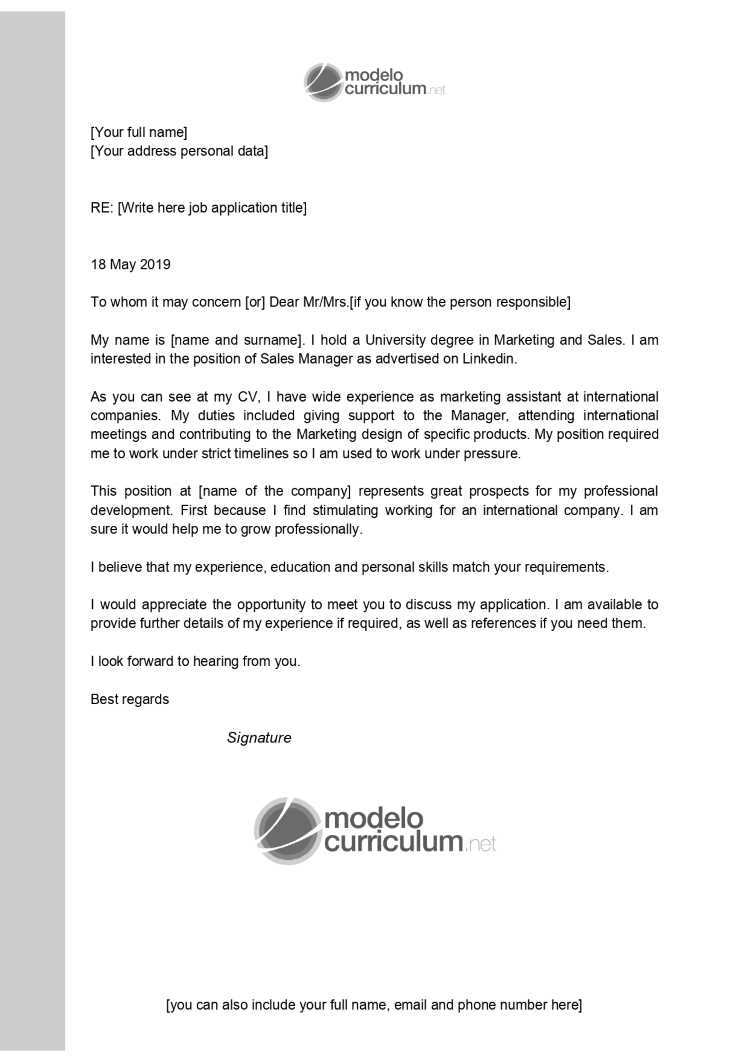
Otros consejos claves para escribir una Cover Letter
- Sé conciso : Las cover letters deben ser breves, idealmente no más de una página.
- Personaliza cada carta : No utilices la misma cover letter para todos los trabajos. Adáptala a cada puesto específico.
- Revisa y corrige : Asegúrate de revisar tu cover letter en busca de errores ortográficos y gramaticales antes de enviarla.
Siguiendo esta guía y utilizando los ejemplos proporcionados, estarás mejor preparado para redactar una carta de presentación que realmente impresione a los empleadores. Además, al final del artículo podrás descargar unas Cover Letter para que puedas editarlas tú mismo/a.
¿Quieres escribir una Cover Letter en español?
Para escribir una Cover Letter en español , solo tienes que seguir los consejos para redactar una Carta de presentación . Sigue la misma estructura y el objetivo es el mismo. Te dejo una Cover Letter en español para descargar.
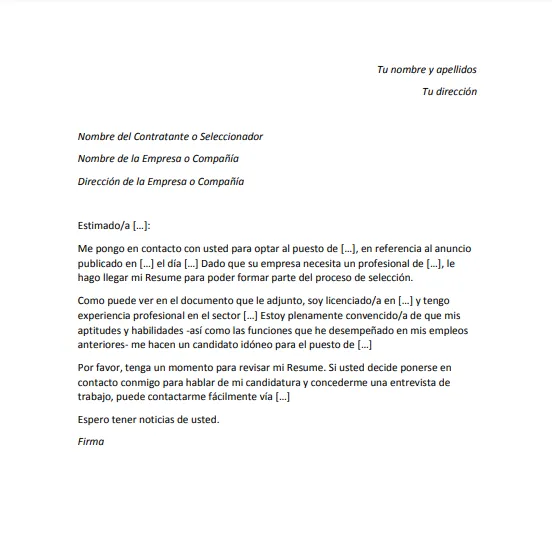
La carta de presentación


La carta de presentación en inglés

Curriculum Vitae: la guía

El currículum en inglés
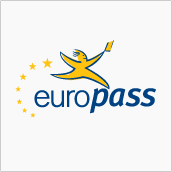
Cómo hacer un Currículum Europeo (CV Europass)

La entrevista de trabajo
Resume template con cover letter.
Si nunca antes habías escrito un modelo de Cover Letter para Resume , no hay nada mejor que una plantilla de Cover Letter para Resume que nos indique los pasos que tenemos que dar y la información que debemos incluir en cada uno de los documentos -que se presentarán a la vez en hojas distintas-.
Si tu objetivo es trabajar en Estados Unidos o redactar un Resume en Australia , el ejemplo de Cover Letter para Resume en inglés será el que mejor se adapte a tus necesidades. No obstante, si la empresa a la que aspiras solicita expresamente un Resume con Cover Letter en castellano , tendrás que descargar el ejemplo de Cover Letter en español para Resume que tienes a continuación.
En cualquiera de los dos casos, basta con pulsar el botón «Descargar DOC» para seguir las instrucciones marcadas y redactar tu propio formato de Cover Letter para Resume . ¿Qué te parecen ambos modelos?
Ejemplo de Cover Letter en español para Resume
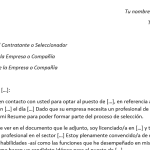
Cover Letter y Resume Template en inglés
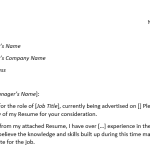
Privacy preference center
We care about your privacy
When you visit our website, we will use cookies to make sure you enjoy your stay. We respect your privacy and we’ll never share your resumes and cover letters with recruiters or job sites. On the other hand, we’re using several third party tools to help us run our website with all its functionality.
But what exactly are cookies? Cookies are small bits of information which get stored on your computer. This information usually isn’t enough to directly identify you, but it allows us to deliver a page tailored to your particular needs and preferences.
Because we really care about your right to privacy, we give you a lot of control over which cookies we use in your sessions. Click on the different category headings on the left to find out more, and change our default settings.
However, remember that blocking some types of cookies may impact your experience of our website. Finally, note that we’ll need to use a cookie to remember your cookie preferences.
Without these cookies our website wouldn’t function and they cannot be switched off. We need them to provide services that you’ve asked for.
Want an example? We use these cookies when you sign in to Kickresume. We also use them to remember things you’ve already done, like text you’ve entered into a registration form so it’ll be there when you go back to the page in the same session.
Thanks to these cookies, we can count visits and traffic sources to our pages. This allows us to measure and improve the performance of our website and provide you with content you’ll find interesting.
Performance cookies let us see which pages are the most and least popular, and how you and other visitors move around the site.
All information these cookies collect is aggregated (it’s a statistic) and therefore completely anonymous. If you don’t let us use these cookies, you’ll leave us in the dark a bit, as we won’t be able to give you the content you may like.
We use these cookies to uniquely identify your browser and internet device. Thanks to them, we and our partners can build a profile of your interests, and target you with discounts to our service and specialized content.
On the other hand, these cookies allow some companies target you with advertising on other sites. This is to provide you with advertising that you might find interesting, rather than with a series of irrelevant ads you don’t care about.
What Is a Cover Letter and How to Write One? (Expert Guide)

A cover letter is an integral part of the job search process . Often, a good cover letter is what gets you the job. However, not many people know how to write a good one. Some may not even know what a purpose of a cover letter is.
In this expert guide, you can find not only a definition of what is a cover letter and how to write a good cover letter, but also tips on how to structure it and send it. Finally, get inspired by the examples, that our experts prepared for you.
Keep on reading and you will also learn:
- why do you need a cover letter;
- what types of cover letters exist;
- the difference between a cover letter and a letter of interest;
- the difference between a cover letter and a motivation letter;
Find out your resume score!

What is a cover letter (Definition + Purpose + Types)
The purpose of a cover letter is to introduce yourself to your future potential employer.
A cover letter illustrates your background and explains why the offered position would be a good fit for you. In a cover letter, you have a unique chance to present yourself, show your personality, and add details that one cannot fit into a structured resume.
In addition, with your cover letter, you can also make up for the lack of previous experience. That is if you can make your enthusiasm and positive qualities shine through.
Over the years the importance of a cover letter grew significantly, and a cover letter became a standardized part of the process of a job application.
With the highly competitive job market, a resume alone – no matter how strong – is simply not enough to get hired. In fact, in 45% of cases, the reason for not being called to an interview is a missing cover letter.
What is the difference between a cover letter and a letter of interest?
While the cover letter and a letter of interest are rather similar, there is a subtle difference between these two. Based on the specific circumstances in which you find yourself, you can decide which one is the right one to write.
- A letter of interest is commonly used in situations when there is NO specific job opening. You send a letter of interest when you find a company interesting, and you believe you would fit in well. However , you are not applying for a concrete job position. Therefore, you can write about your skills and professional experiences more broadly so you can make yourself available to a wider range of possible positions . Furthermore, in a letter of interest, you can always politely request an interview.
- A cover letter is a response to a concrete job opening. Therefore, you focus on a more limited set of qualities that would make you the perfect candidate for this specific role.
Moreover, a cover letter always comes hand in hand with a resume. Because of that, a cover letter should always mention your CV and match it. In a cover letter, you can also elaborate on the information, which is already listed in your resume.
If you want to learn how to write a good resume, have a look at our ultimate resume guide . You can even turn your LinkedIn profile into a polished resume .
What is the difference between a cover letter and a motivation letter?
If you are deciding whether to write a cover letter or a motivation letter , it is again important to look at the situation in which you find yourself.
One writes a motivation letter when applying for a study program, a university placement, or a volunteering position. In a motivation letter, you should first and foremost focus on expressing your enthusiasm. Moreover, in a motivation letter, you can put the focus on your personality and on what makes you unique.
In the cover letter, you are advised to do this too; however, the key thing is to demonstrate why are you the perfect fit for a specific role. A cover letter also tends to be shorter than an average motivation letter.
What are different types of cover letters?
When it comes to the cover letter itself, there are three standardized types of cover letters . Each type has a slightly different format. Therefore, it is important to correctly identify which type of cover letter you need and adjust its format accordingly.
Networking cover letter
This very specific type of cover letter is sent out to your professional network in a situation when you are looking for a job but there is no specific job opening to which you are reacting. However, you want to inform your connections that you are open to a new role.
While using your network to get a job is usually the right move, one needs to be extra careful when sending out a networking cover letter. It needs to be formulated with politeness and delicacy.
Unofficial cover letter
Sometimes, only a resume is required by the company. In this situation, it is not necessary to attach an official structured cover letter.
Nonetheless, if you want to demonstrate the depth of your interest and elaborate on your professional experience in more detail, you can always write a short, un-official, and more casual cover letter. It should not follow the strict cover letter format and it can be only around two paragraphs long.
If you want to, you can even place it in the body of an email, to which you are attaching your CV.
Application cover letter
This is the standard and most common type of cover letter. You write it when you want a specific job position for which you saw an opening.
There are several unwritten rules on how to write it. So, if you are asking what makes a good cover letter and what you should do to write one, just scroll down to the next chapter.
How to write a cover letter in 2022
Writing a good cover letter is not as hard as it may seem at first. There are a few unspoken rules that if you follow, you have a high chance of being called for an interview. All you need to know is what to include in your cover letter and how to format it.
What to include in your cover letter and what is the cover letter structure?
If you are wondering what to put in your cover letter and how to structure it, what follows is a simple step-by-step list of elements that cannot be missing from a good cover letter.
At the start of your cover letter , you should have the correct heading and contact information. Don’t forget, this is your one chance to make a good first impression. Always include:
- your full name in large font as a heading. Possibly, you can also use a catchphrase, if you really want the attention of the recruiter;
- follow it by contact details, such as a phone number or email;
- include the information about your employer: such as the name of the recruiting person (if applicable), the name of the company, the address, phone number, and an email address;
- address the cover letter to the person who is listed as a recruiter/hiring manager. If their name and contact details are not available online, go for the standard " Dear Sir/Madam" ;
- don’t forget to mention how you came across the offer - their webpage, LinkedIn, or a friend who works there already;
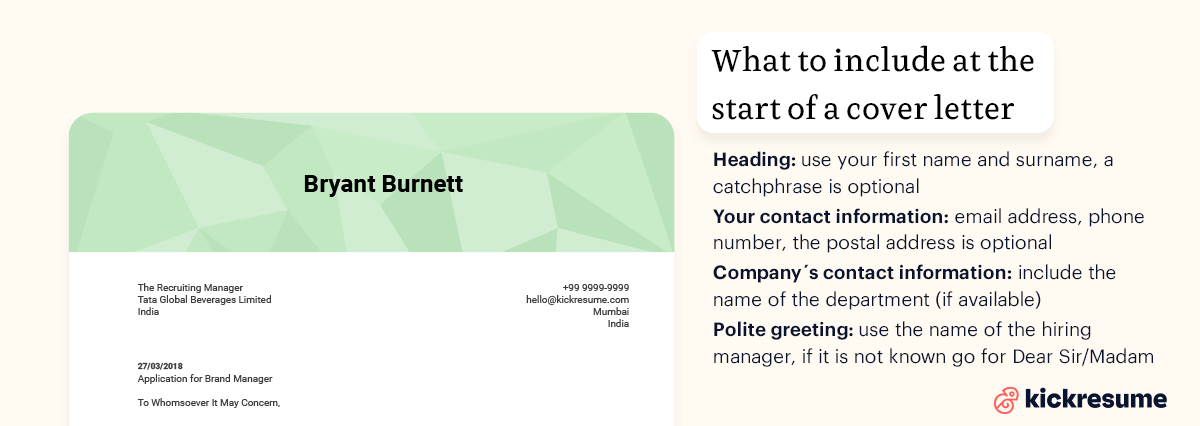
In the body of the cover letter, write about your professional skills, past experiences, and hopes and aspirations for your professional future. Describe how your previous experiences shaped you and why does it make you the perfect fit for the job. Mention also that this job is, in exchange, a good fit for you, too.
Here, you should not exceed three paragraphs. Don't be repetitive, or too descriptive - rather demonstrate your qualities.

At the end of a cover letter, try to catch the attention of the recruiter again. Emphasize your motivation and repeat, why are you the right person for the job.
Never forget to thank the hiring manager for their time and express your high hope for hearing back from them. Mention your resume and remember to sign the letter with your full official name.

Cover letter formatting
The cover letter is usually read by the HR department. In large corporates, there are on average 250 applicants per one open position. Because of this, the hiring manager has an extremely limited time to look at your cover letter. Thanks to this, you must make sure your cover letter is simple, not too long, well-structured, and easy to read.
- Your cover letter must have the correct length. A cover letter should never exceed one A4 page. At the same time, it should not be shorter than half a page. A good cover letter is 250-300 words long, with 400 words being the maximum limit.
- It consists of approximately three to four paragraphs and the maximum acceptable number of paragraphs is six.
- The best font to use for a cover letter is a classic, simple, and professional one. For instance, with the good-old Arial, Calibri , or Times New Roman, you can never make a mistake. However, if you work in a creative business, you can always consider using a more eye-catching design. Remember though, it should always remain easy to read and navigate.
- The size of letters should be between 10.5 and 12, the margins 1 or 1.5.
If you want to have a clearer idea about how to write the perfect cover letter, have a look at this video tutorial .
How to write a cover letter with no experience
If you are in an early stage of your career and only fresh out of school, do not despair. A cover letter can be your biggest help in this situation. As opposed to your resume, in a cover letter, your positive attitude can change a lot. Make it clear how enthusiastic and eager to learn you are.
Focus on your qualities, skills, extracurricular, or volunteering experience. Possibly, you may have some related experience from your personal life. If it is truly relevant, include it, too.
How experts do it: best cover letter examples
Now that you know what a finished cover letter looks like and how to write one, you can get inspired by cover letter examples written by our experts. This will make sure that from now on you will write truly perfect cover letters.
Example 1: Cover letter for the position of nanny

Example 2: Cover letter for the position of s oftware engineer

Example 3: Cover letter for a position of marketing intern

Have a look at other cover letter examples, too. And you can have a cover letter just like this as well! Just use one of our Kickresume cover letter templates . You can choose a free or a premium one.
Tips for sending a cover letter by email
Once you have the cover letter written, it is time to hit the send. But be careful, don’t make any mistakes that could lead to your application being rejected. Here are some tips on how to send the cover letter properly via email:
- Don’t forget to properly read the instructions written in the job opening. Usually, the instructions are placed at the bottom of the job advertisement. Here, one can find the name and the email address of the hiring manager who will receive the applications. Double-check the information and make sure you address the person in the email, as well as the body of the cover letter.
- Do not forget to write an appropriate email subject, in which you mention the job position and the fact that you are applying for it
- In the email itself, be polite and brief . Remember to mention the Cover Letter in the attachment.
- Make sure your email address sounds professional . Your email must have your full name and surname in it. Nicknames, extra letters, or numbers are not recommended.
- Don’t forget to attach the cover letter, and/or Resume. We have all forgotten to attach something before. However, do not let it happen in this instance – you have only one chance to make a good first impression.
- Save the cover letter properly. Use a format, which is easy to open for most computers (such as .pdf). Don’t forget to name the document properly – mention your name, the position for which you are applying, and consider adding a date. Always match it with the name of your CV.
- Don’t forget to thank the recruiter for their time. Politeness can get you far.
- End the email with your full name and best regards. Be official and professional, this is no time for being casual.
Other cover letter tips and ideas
- Make it easy to read, always. A simple and larger font, shorter sentences, and captivating beginning of paragraphs will get you far.
- Put the most important information at the beginning.
- Do not send the same cover letter to multiple openings. Always tailor the perfect resume for each job offer.
And there you go! Now when you know how to write the perfect cover letter. For the best result, use one of our Kickresume cover letter templates!
Kickresume wishes you the best of luck with your application. Get that dream job!

Kaja Jurčišinová
Kaja Jurcisinova is a fresh graduate and a junior copywriter at Kickresume. Kaja completed her undergraduate degree in Art History at the University of St Andrews in 2018 and graduated with a Master’s in Arts and Culture from the University of Groningen in 2021. She was an intern at multiple cultural institutions across Europe, including the Dutch Museum Association in Amsterdam, the Matter of Art Biennale in Prague, and the European Cultural Centre in Venice. At the moment, she resides in Visby on the Swedish island of Gotland.
Hungry for more?
How to write a professional resume summary [+examples], how to put your education on a resume [+examples], how to describe your work experience on a resume [+examples], let your resume do the work..
Join 5,000,000 job seekers worldwide and get hired faster with your best resume yet.

Skip navigation

- Fall Updates
- For Employers
- In the Know
- Make An Appointment
- Internships
- Employer Connections
- CCE Programs
- Funding Programs
- Drop-in Hours
- Career Counseling Appointments
- Practice Interviews
- Programs & Services
- Design Your Next Steps
- Resumes & CVs
- Cover Letters
- Negotiating
- Career Advancement
- Graduate School
- Premium Resources
- Communications & Media
- Engineering & Technology
- Environment & Sustainability
- Financial Services
- International Affairs
- Non-Profits & Social Justice
- Psychology, Counseling, & Social Work
- Ways to Gain Experience
- Career Assessments
- Connect With Alumni
- Student Experiences
- First-Generation/Low-Income Students
- International Students
- Students with Disabilities
- Veteran Students
- LGBTQ+ Students
- Visiting Students
- Students of Color
How and Why to Write a Great Cover Letter

A cover letter is a one-page business letter that you submit when applying to a job, along with your resume. As a piece of persuasive writing, your cover letter will aim to convey to the employer why you’re a great candidate for the role.
What is the purpose of a cover letter?
Your cover letter complements your resume by making it easy for the employer to see how your experience and interest connect to the position. Your goal is to convince the employer to interview you.
With your cover letter, you’ll aim to:
- Highlight your qualifications: You’ll show how your skills and experience relate to the employer’s needs for a specific position.
- Showcase your motivation: You’ll demonstrate your enthusiasm for the specific position and the organization.
- Reflect your voice and written communication skills: You’ll give the employer a sense of your personality and writing style.
When should I write a cover letter?
Not all jobs require cover letters. So, how do you decide whether to submit one?
Submit a Cover Letter when…
- The posting explicitly requests that you do so
- You’re applying to an opportunity at a mission-driven organization
- You think that doing so could provide important information to the employer that they wouldn’t get from your resume
Consider Submitting a Cover Letter when…
- It’s marked “optional” in an application, and you have the bandwidth to do so
- You have content that you can easily recycle or repurpose into a tailored cover letter
No Need to Submit a Cover Letter when…
- A posting specifically tells you not to submit one
- There’s no way to submit one in an application portal, and doing so would require a serious workaround
If you’re applying to several similar opportunities, creating a draft cover letter in advance, geared toward that type of opportunity, can be a helpful way to save time in your actual application process.
How do I write a cover letter?
Your cover letter should articulate your qualifications and motivation for the position. Read the job description closely and research the organization. As you craft your cover letter, use examples that demonstrate your relevant skills, knowledge, and interests. The cover letter should be concise, clear, and well-organized.
Before Writing
Research the employer.
Learn enough about the organization to articulate why you are a strong fit for that firm.
- Review the firm’s website and LinkedIn page.
- Speak with current or previous employees.
- Read articles and social media for current news.
Analyze the job description
Look for skills, duties, and qualifications of the job so you can design your letter to match these as much as possible.
Reflect on your experience and motivation
Identify skills and personal qualities you have developed which will be useful in this role. Ask yourself:
- What attracts you about this role/company/industry?
- What have you have done in your work experiences, classes, internships, activities, projects, volunteer work, travel, etc., that is similar to the duties required of the job?
Cover Letter Structure
As a business letter, the cover letter should include:
- Heading: Include your name and contact information in the same format as your resume
- Salutation: Address your letter to the specific individual who can hire you, if this is known. If the name is not included in the job description, address the letter to the Hiring Manager or title mentioned in the job description.
- Body Paragraphs: Discuss your experiences, interests, and skills to show the employer how you can add value to their team. See the section below for more guidance.
- Signature Line: Include a closing and your name.
The cover letter should be one page, about three or four paragraphs, and single spaced. Use 10-12 point font and one inch margins.
When applying online, upload your cover letter as a PDF file, unless another format is specified. When sending your resume and cover letter by email, you may write a short note or paste your cover letter in the body of your email (without the address header) and also attach the PDF file.
Cover Letter Content
Your cover letter should answer who, what, when, where and why you are applying for the opportunity.
Introduction
State the position for which you are applying. If you have a referral or spoke with someone from the company, you can mention it in the introduction. Provide some basic information about yourself; this can include your class year and what you’re studying at Columbia. Briefly outline why you’re interested in the organization and what you bring in terms of relevant experience and skills.
Body Paragraphs
These paragraphs will highlight your qualifications and strengths that are most relevant to the organization and position. Use the job posting and your research as clues to determine what the employer is seeking in a candidate. Have your resume beside you and reflect on what you want the employer to know about you. Are there experiences you want to expand upon that demonstrate your understanding of the role and ability to do the job requirements?
Structure the paragraphs based on relevance, not chronology. Lead with your most relevant skill or strongest experience.
Start each body paragraph with a clear topic sentence. This can highlight a key skill set, a transferable experience, or a core area of knowledge you’ve built through your studies. Walk the reader through a project or experience, integrating the relevant skills you used and qualities you demonstrated. Provide details about your accomplishments and impact. Connect how these experiences have prepared you for this role and why you are motivated to do this job. There is no need to apologize if you feel you lack experience; focus on the accomplishments that you have.
Recap what you would bring to the organization and your interest in the position. Thank the employer for their consideration. Keep your tone positive and enthusiastic.
Check out our example of how to structure your cover letter content .
Editing Tips
Use our Cover Letter Checklist to make sure your format and content is in line with best practices.
- Ensure that the content reflects the requirements in the job description
- Keep the cover letter concise, at one page or less
- Correct any errors in grammar, sentence structure, and spelling
- Use the active voice
- Avoid beginning too many sentences with “I”
Privacy Policy Accessibility Notice of Non-Discrimination Terms of Use
Get expert insights delivered straight to your inbox.
How to Write a Cover Letter That Gets Noticed
8 Min Read | Feb 23, 2024

Job hunting isn’t for the faint of heart. You’re putting in extra hours after work, chipping away at application questions, polishing up your resumé, and hoping for the best. And to top it all off, you’ll sometimes have an extra item to check off your list: writing a cover letter.
Now, not all companies require a cover letter these days, so I wouldn’t worry about sending one unless the company you’re applying to asks for it. I’d rather you include the typical information found in a cover letter—like a summary of your experience and an explanation of why you want the job—in your resumé .
But if you’re filling out an application that does ask for a cover letter, write one! You want to show potential employers that you’re paying attention. So let’s go over the best method for writing a cover letter—the same one I teach on The Ken Coleman Show . We’ll also look at some sample cover letters to give you some extra direction and clarity.
What Is a Cover Letter?
A cover letter is a short letter written directly to the person who will read your job application and resumé. Traditionally, while your resumé is more of a high-level overview of your past experience, your cover letter tells your story and what you want to do. A cover letter is an opportunity to showcase your skills and motivate the hiring manager to consider you for the position.
How to Write a Cover Letter
The goal of a cover letter is to convince the hiring manager that you deserve an interview . Here’s how you can put your cover letter together to make an impact.
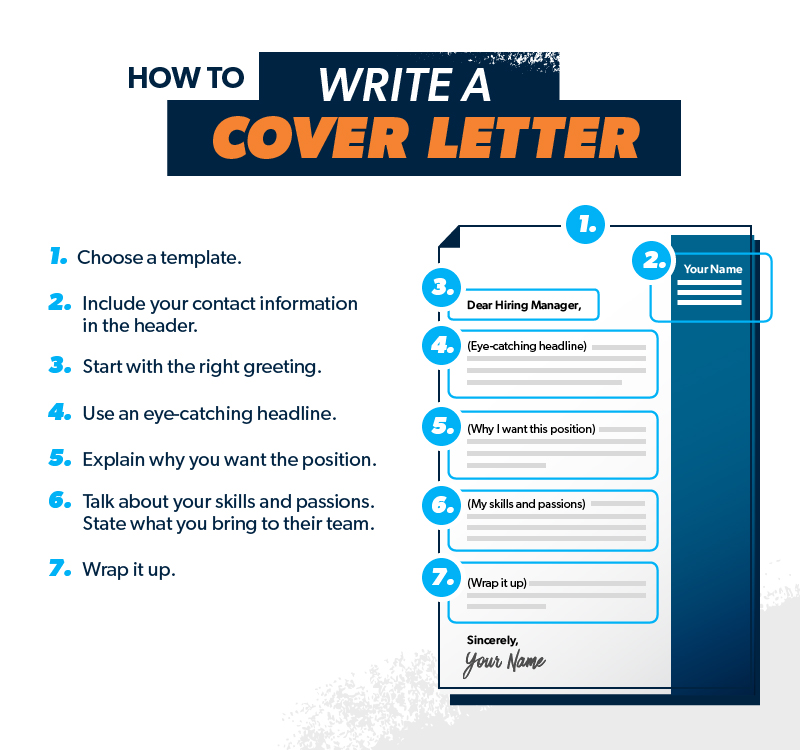
1. Choose a template.
There are plenty of easy-to-use, free cover letter templates that can help you figure out how to format your document. But it doesn’t need to be cookie-cutter—it should still show who you are and why you want to work at this specific company.
Think about it: When you’re writing a letter to a friend (or a text message, in this day and age), you make it personal and conversational. Each cover letter you write should be personalized for the company you’re applying to. Put yourself in their shoes. If you were hiring for this position, what would you be looking for?
No matter which cover letter template you choose, you should learn everything you can about the company and the position. Use that information to make your letter relevant and show you’ve done your homework. Keep it to around 300 words (that’s about one page), and remember, just like your resumé, don’t overdo the design. Leave the crazy fonts alone, folks. The goal is to look professional, not tacky!
2. Include your contact information in the header.
Even if your contact information is already on your resumé, you should still put it in the header of your cover letter. Here are the important things to include:
- Phone number
- Email address
- Any helpful follow-up information: a link to your portfolio, website or LinkedIn account (if you don’t have any of those, that’s okay)
This header can go at the top of the page underneath your name or in the top right corner. If you want to get really formal, you could also include the name of the person you’re addressing, the name and address of the company you’re applying to, and the date of application. This info can go on the left side of the page below the header.
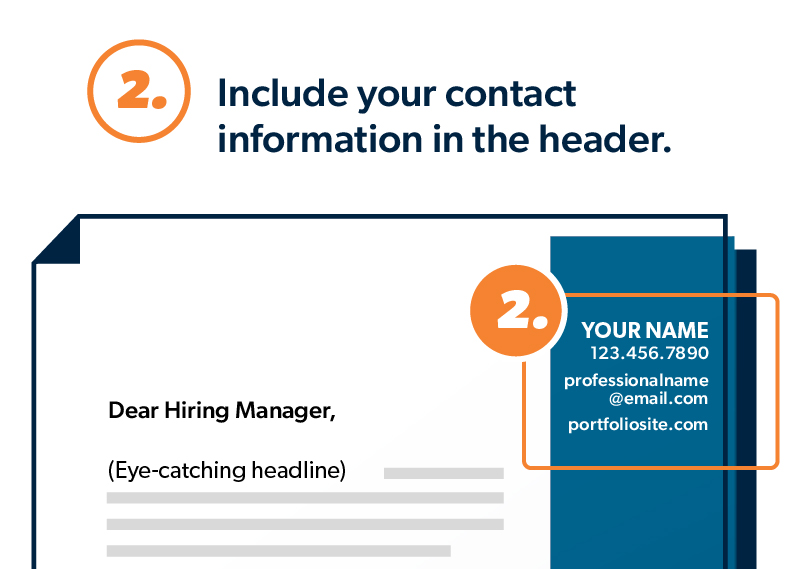
3. Start with the right greeting.
Don’t start out with “Dear Sir or Madam” or “To whom it may concern.” You’re not Shakespeare! Think about how you’d say hello to someone if you were sending them a polite and professional email. Here are some options:
- Name of hiring manager : If at all possible, directly address the person who will be handling your application. See if you can figure out who it is through a mutual connection at the company, the website, or maybe even LinkedIn.
- Name of company you’re applying to : If you can’t find the name of a specific person, “Dear [Company Name] Team” is always a safe bet.
- Generic title or position : Another option is to just say “Dear Hiring Manager” or “Dear [Team You’re Applying For] Hiring Manager.”

4. Use an eye-catching headline.
Treat your opening line like a hook. It needs to grab the reader’s attention and give them a reason to stick around. Make it count! For extra oomph, you can write this in large (and maybe even bold) letters to mimic a newspaper article headline.
You deserve to win at work. Our new book and assessment will show you how.
Think of the headline like a great social media post. When you’re mindlessly scrolling through Instagram or Facebook, what causes you to pause, squint your eyes, and take a closer look at what you see?
Once you’ve snagged their attention, it’s time to make your case about why you’re a good fit for the job.
5. Explain why you want the position.
This is your chance to wow the recruiter with your knowledge and enthusiasm about the company and role. Show them you’ve done your homework by touching on the mission, vision and values of the business. Then, explain why you’d be thrilled to contribute to their work.
6. Talk about your skills and passions.
This is the meat of the letter—but I want you to think lean. The HR team reading your application doesn’t have time for a novel. Write a couple of paragraphs, but make sure each one is only a few sentences.
Be humble—but confident—as you talk about your talents and skills. What makes you a good fit for this job? Include both hard skills (like coding or project management) and soft skills (like how you’re curious and always ready to learn something new).
Also, describe the passion that drives the work you do. What makes you come alive? What activities cause you to lose track of time? Let the recruiter sense your excitement for work.
7. Wrap it up.
This is where it gets fun. When you’ve found a job that combines what you do best with what you love to do most, you’ll be producing results that matter. Talk about the core motivation that helps you wake up every morning. Tell the hiring manager how you’ll contribute your skills and passions to help move the company forward.
Then, wrap it up by thanking the hiring manager for their time and attention.
Let me be clear about something: It’s not your job to follow up. It’s their job to reach out to you. If you lay out your case like I’ve described, they’ll have plenty of motivation to reach out to you for an interview. You’ve done the best you can do—now relax and let the chips fall where they may.
Other Tips for Writing a Cover Letter
- Share your purpose statement . A well-crafted purpose statement that identifies your talents (the things you do best), passions (the work you love), and personal mission (the results you care about) is a great way to help the reader understand your goals and whether you’d be a good fit for the role. For some extra help on that front, check out my guide on how to find your purpose .
- Use words and phrases the company uses . Take a look at their website and social media to get an idea of their core values and culture. Using a phrase from the company itself can let them know you’re dialed in to their culture. Show them from the get-go that you’re speaking their language. Just don’t get too cheesy with this one.
- Avoid clich és. While you’re writing about what makes you a strong candidate for the job, make sure your words are bold too . Don’t use cliché phrases like “I’m a team player” or “I think outside the box.” Instead, use specific examples to demonstrate those skills. Remember: Actions speak louder than words. Show, don’t tell.
- Proofread your letter! Grammar, spelling and accuracy matter . Every detail in your cover letter should look, feel and sound excellent. Don’t let a few typos rob you of your shot at your dream job! So, before you hit send, double-check your spelling and grammar. You may even want to print the letter and read it out loud as a final checkup, or have a friend look it over for you.
Cover Letter Examples
Whether you’re brand new to the workforce, finding the right fit for you, or an old pro moving up the ladder, there’s a way to write a cover letter that’s best for you and your experience. Here are a few examples of cover letters for new college graduates, middle managers, folks making a career change, and senior executives that you can use as a guide.
New College Graduate Cover Letter
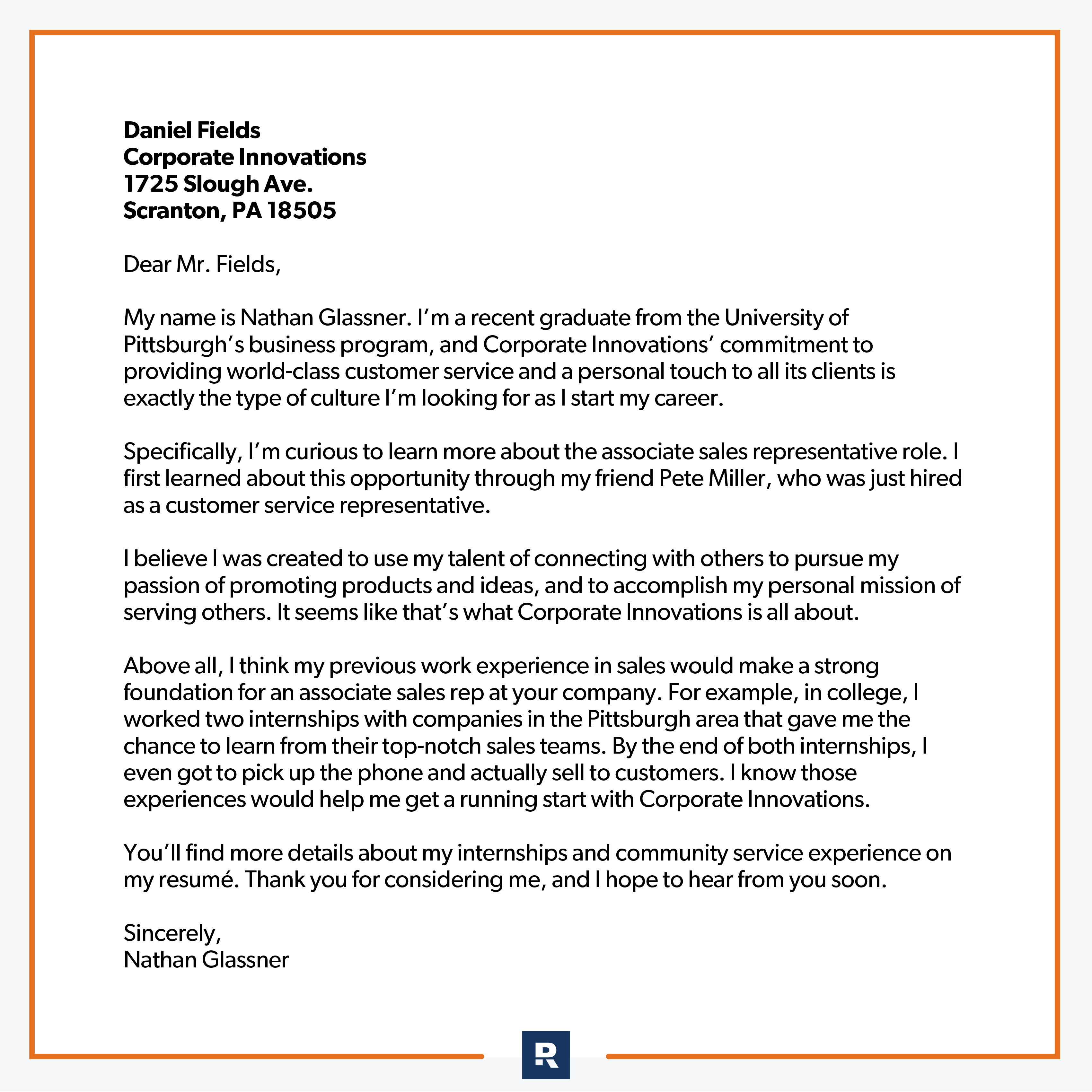
Mid-Career Cover Letter

Career Change Cover Letter
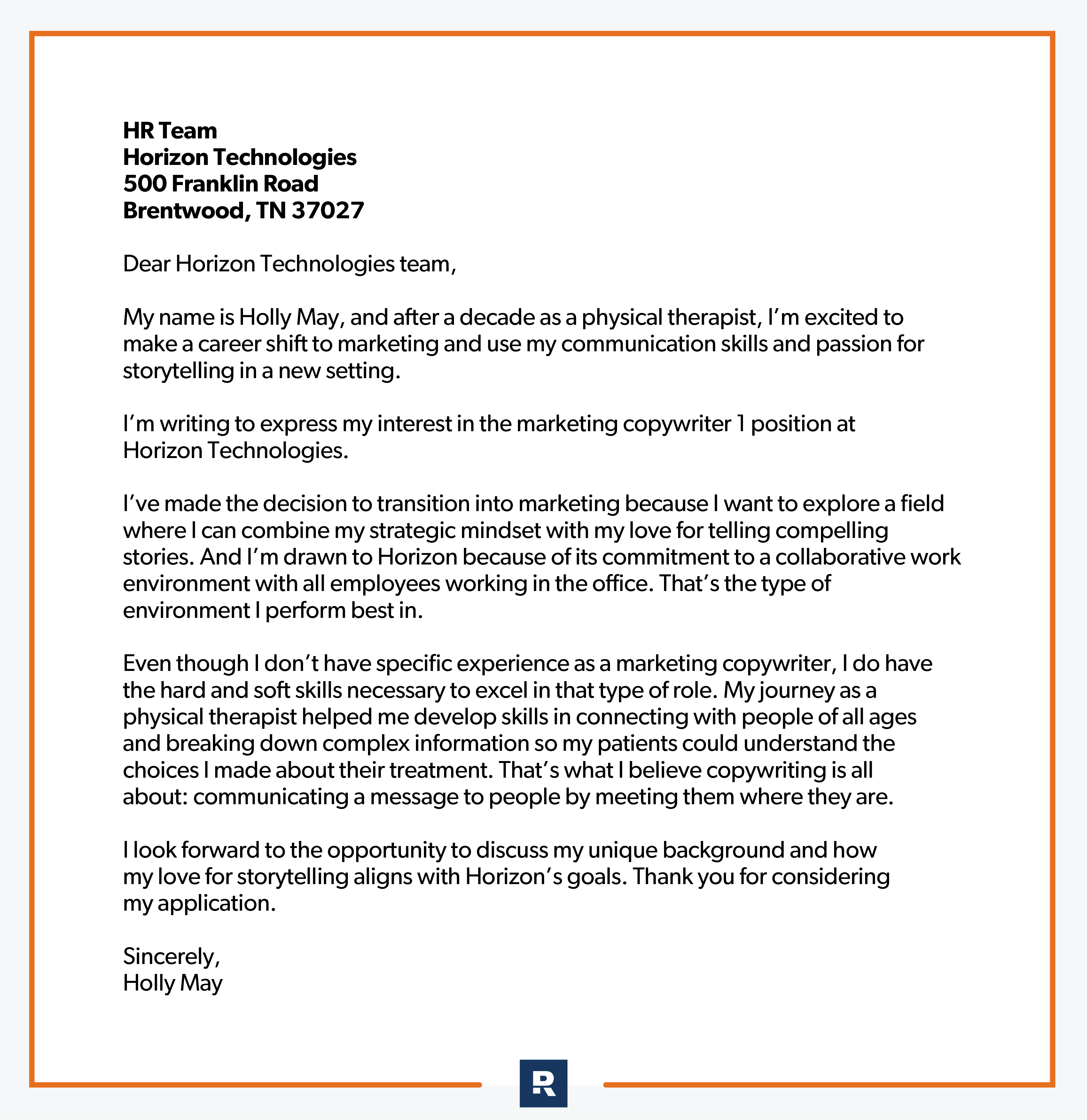
Senior Executive Cover Letter

You’ve Got This!
Remember this: The goal of a cover letter is not to sound like a professional writer—so there’s no need to put that kind of pressure on yourself. Instead, cover letters are all about showcasing your skills, expressing your enthusiasm for the position, and making a compelling case for why you're the perfect fit for the job. If you follow these tips, that’s exactly what you’ll do.
Writing a great cover letter is only half the battle when you’re filling out a job application—it’s usually even more crucial to pair your cover letter with a high-quality resumé. And since most recruiters only spend an average of 7.4 seconds reading each resumé, yours needs to stand out from the pack in a big way. 1
That’s why I created my free resumé guide . It’ll walk you through a five-step process for making your resumé a one-page guide that leads right to an interview. If you want to get noticed, you need to make your resumé noticeable , and this guide will help you do just that.
Frequently Asked Questions
How long should a cover letter be.
A good length to shoot for in your cover letter is around 300 words, or one page. Anything beyond that is too long.
What do I write in a cover letter?
When you write a cover letter, you should give a quick summary of your relevant experience and education while also explaining why you believe you’re a good fit for the job. It’s also a good idea to spell out why you want the job and how the company’s mission connects to your career goals.
What is a powerful opening sentence in a cover letter?
You should open your cover letter with an eye-catching headline that grabs the reader’s attention and gives them a reason to stick around. Think of the headline like a great social media post—it should instantly hook the reader.
Did you find this article helpful? Share it!

About the author
Ken Coleman
Ken Coleman is the author of the national bestselling book From Paycheck to Purpose and the #1 national bestseller The Proximity Principle. He hosts The Ken Coleman Show, a caller-driven show that helps listeners find the work they’re wired to do. Ken also co-hosts The Ramsey Show, the second-largest talk radio show in America, and makes regular appearances on Fox News and Fox Business. Through his speaking, broadcasting and syndicated columns, Ken gives people expert advice, providing strategic steps to get clear on their unique purpose and grow professionally. Learn More.
18 Tips for Starting a New Job the Right Way
So, you’re starting a new job. Congrats! But now what? Here are 18 practical tips on how to make the most of your role during your first day, your first week and your first few months.Starting a new job? Make sure you meet these five people your first week in the office.
How to Find Your Dream Job
Being miserable in a boring 9-to-5 job is no way to live. Stop wondering if you’ll ever get your dream job—instead, start working my proven seven-stage path to meaningful work.
To give you the best online experience, Ramsey Solutions uses cookies and other tracking technologies to collect information about you and your website experience, and shares it with our analytics and advertising partners as described in our Privacy Policy. By continuing to browse or by closing out of this message, you indicate your agreement.

IMAGES
VIDEO
COMMENTS
1. Comienza tu cover letter con un header. Al igual que al hacer una carta de presentación general, al escribir una cover letter se recomienda comenzar por un encabezado o header que contenga tu información, la información de la empresa y la fecha de envío. Esto le aportará un toque más profesional al documento.
1. Format. Your cover letter is a professional communication structured in full paragraphs, while your resume should have sections with bullet points that convey specific details like dates of employment and job duties. 2. Content. A resume is a broad overview of your educational and career history.
The difference between a cover letter and a resume. There are four key differences between a cover letter and a resume: 1. Importance. Resumes are a requirement when you apply for work. On the other hand, cover letters are often necessary, but optional when a company specifically says to not include one.
A cover letter is a one-page document included in your job application (along with your resume). When written well, your cover letter provides employers with important context that isn't covered in your resume. Build My Cover Letter Now. Written By Ida Pettersson Career Coach and Resume Expert. Reviewed By Conrad Benz Content Manager.
Pro tip: Intenta no repetir la información que ya has contado en tu currículum en inglés. Por el contrario, utiliza tu cover letter para que el reclutador tenga una visión más completa de ti como profesional. 5. Muestra tu motivación por trabajar en esa empresa. En una cover letter no solo tienes que hablar de ti.
En el primer párrafo de tu cover letter, preséntate brevemente y menciona el motivo de tu solicitud. Expresa tu entusiasmo por el puesto y la empresa. Menciona cómo te enteraste de la oportunidad, por ejemplo, LinkedIn (incluye este dato solo si es relevante, es decir, si aporta un dato valioso; de lo contrario, omítelo).
Tone #3. Purpose Resume Vs Cover Letter: 3 Key Similarities #1. Length #2. Tailoring it to the Job #3. Matching Templates What to Include in Your Resume What to Include in Your Cover Letter 13 Resume Examples #1. Business Analyst Resume Example #2. Digital Marketing Resume Example #3. Software Engineer Resume Example #4.
A cover letter is a short introduction to you that concisely communicates your interest in a job opportunity along with your top skills and relevant experience. It's important to customize your cover letter for each role to demonstrate that you've researched the organization's mission and values. — Genevieve Northup, MBA, SHRM-CP, HCI-SPTD.
A cover letter is a personalized document submitted alongside your resume or CV when applying for a job. It is designed to introduce yourself to the employer, showcase your qualifications, and establish a connection with the hiring manager. Cover letters are crucial in the job application process, as they are the first impression you give to a ...
A cover letter is a type of letter you include in your job application. Its main role is to let the reader know what motivated you to apply, and what you can offer. A cover letter is not synonymous with a resume or CV. Typically, a cover letter's main body consists of three paragraphs, each for a different purpose.
Middle paragraph (s) Closing paragraph. Letter ending and signature. Your cover letter should be one page long and use a simple, professional font, such as Arial or Helvetica, 10 to 12 points in size. Your letter should be left-aligned with single spacing and one-inch margins. Show Transcript.
When it comes to job search, writing a cover letter and resume are two crucial steps to landing interviews. A cover letter is a document that accompanies a resume and provides a brief overview of the candidate's qualifications and interests, while a resume is a formal document which highlights an individual's work experience, educational background, professional achievements, and relevant ...
This resume cover letter presents the candidate in a memorable way telling stories that show his skills and experience match what the employer seeks. It's also well-organized and long enough. The difference between a resume and a cover letter is clear: a resume is a list of specs and a cover letter is a full-blown marketing campaign. Yes, it ...
Resume Template con Cover Letter. Si nunca antes habías escrito un modelo de Cover Letter para Resume, no hay nada mejor que una plantilla de Cover Letter para Resume que nos indique los pasos que tenemos que dar y la información que debemos incluir en cada uno de los documentos -que se presentarán a la vez en hojas distintas-.. Si tu objetivo es trabajar en Estados Unidos o redactar un ...
A cover letter is a letter containing three to four paragraphs that a job seeker or an internship applicant shares with their prospective employer when applying for a job. A cover letter is submitted alongside the applicant's résumé and in many ways complements it. While a résumé lists the applicant's employment and education history ...
A cover letter is a response to a concrete job opening. Therefore, you focus on a more limited set of qualities that would make you the perfect candidate for this specific role. Moreover, a cover letter always comes hand in hand with a resume. Because of that, a cover letter should always mention your CV and match it.
Best wishes, Cordially, Respectfully, Kind regards, Best regards, Yours truly, Then, make two spaces below the salutation, and type your full name. For some professional (but optional) flair, sign your cover letter either with a scan of your signature or by using software like DocuSign. 8.
How to Write the Perfect Cover Letter #1. Choose the Right Cover Letter Template #2. Put Contact Information in the Header #3. Address the Hiring Manager #4. Write an Eye-Catching Introduction #5. Use the Cover Letter Body for Details #6. Wrap It Up and Sign It Cover Letter Writing Checklist 15 Cover Letter Tips 15+ Cover Letter Examples 5 ...
With your cover letter, you'll aim to: Highlight your qualifications: You'll show how your skills and experience relate to the employer's needs for a specific position. Showcase your motivation: You'll demonstrate your enthusiasm for the specific position and the organization. Reflect your voice and written communication skills: You ...
A cover letter is a one-page document you send with your resume that features additional information about skills and experiences related to the job you're seeking. It is typically three to four short paragraphs. In these paragraphs, you should meet these goals: Mention the role you want by name.
Consultant Cover Letter Example #10. Digital Marketing Cover Letter Example #11. Graphic Designer Cover Letter Example #12. Administrative Assistant Cover Letter Example #13. Front Desk Cover Letter Example #14. Human Resources Cover Letter Example #15. Sales Agent Cover Letter Example #16.
The goal is to look professional, not tacky! 2. Include your contact information in the header. Even if your contact information is already on your resumé, you should still put it in the header of your cover letter. Here are the important things to include: Name. Phone number. Email address.